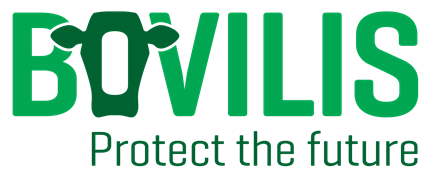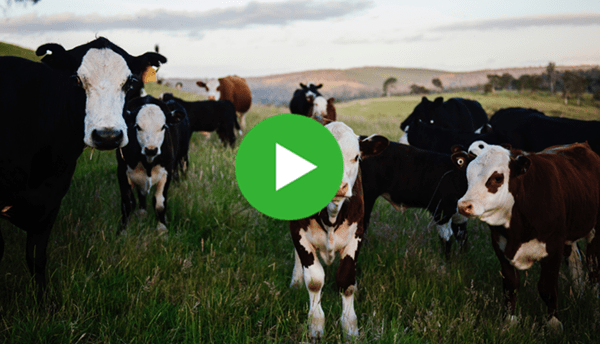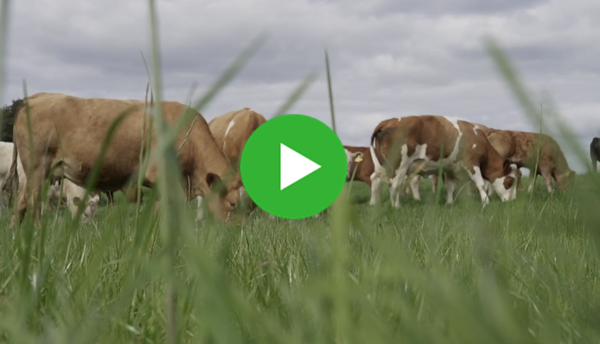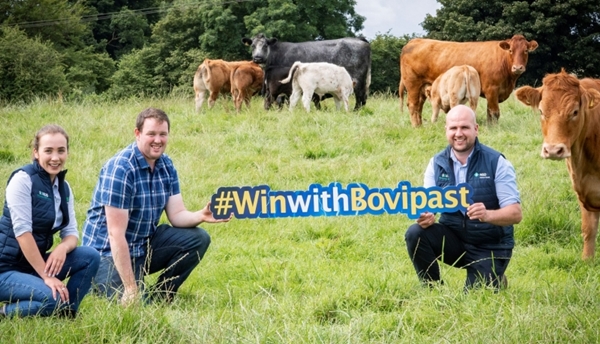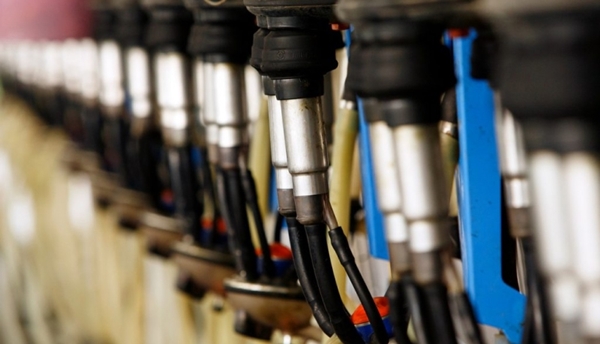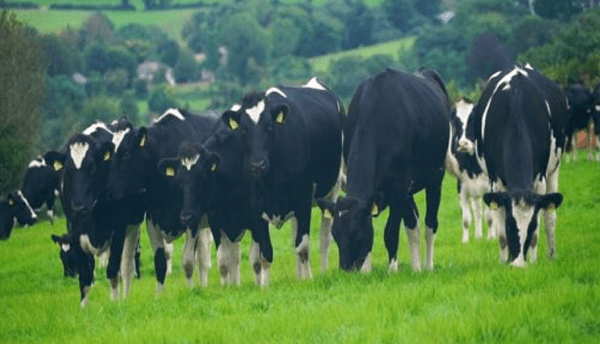

NEWS
Virtual Tour: Is Your Shed Ready For Housing?
21st Oct 2020
See below, a virtual tour of a Teagasc shed. On the tour, we draw your attention to different areas which ensure optimal living conditions for the animals.
Bedding & Animal Space
When housing cattle, it is important to allow enough space for each animal to feed, drink and rest stress free. Animals of various sizes will have different space requirements. Always ensure that there is adequate bedding of clean, dry straw available during the housing period. Sheds should be bedded regularly to keep moisture levels low. To check, kneel in bedding for approximately 1 minute. If your knees are wet, the shed needs to be freshly bedded. The objective of bedding is to keep the animal clean and dry. Space requirement varies depending on shed type and the animal type. A suckler cow on straw will typically need 4 to 5 m2 of bedding space and weanlings on slats will need between 2 to 2.5 m2. For further information accommodation requirements see figure 1.
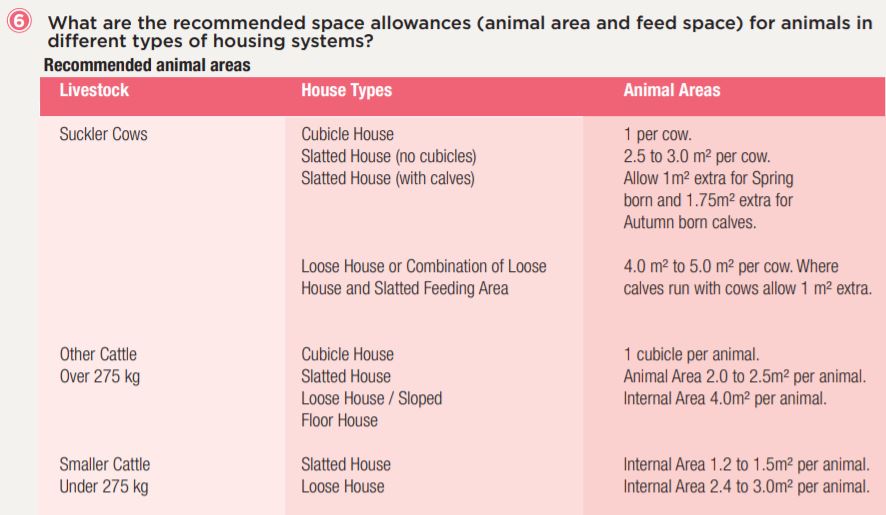
Feed Space
When housing cattle this autumn, it is important that all bedding from the previous year has been removed and the shed has been thoroughly cleaned. All areas of the shed including the feeding area should be power washed and adequately disinfected from the previous year. Feed space requirements depend on the feed availability. A general rule of thumb is to ensure each animal can feed at the same time. Typically, a suckler cow requires a feed space of 600 mm with space for two cows to pass behind. Diagonal barriers have the advantage of less bullying and reduce the amount of feed taken into the pen. Allow for the bottom rail when deciding the height of the stub wall. The animal’s neck should not normally come in contact with the top rail with diagonal feed barriers. See figure 2 below for further animal space requirements.

Ventilation
The objective of shed design is to ensure adequate air flow on a still day and to shelter animals on a day of high wind speeds. While this is possible for newly built sheds, older sheds may not be able to provide this function and rely on the stack effect. The stack effect is where the heat generated by animals in the building rises and is replaced by fresh air coming in at a lower level of the shed (above the wall, under the eaves or through the side sheeting/boarding). See figure 3 which illustrates this process.
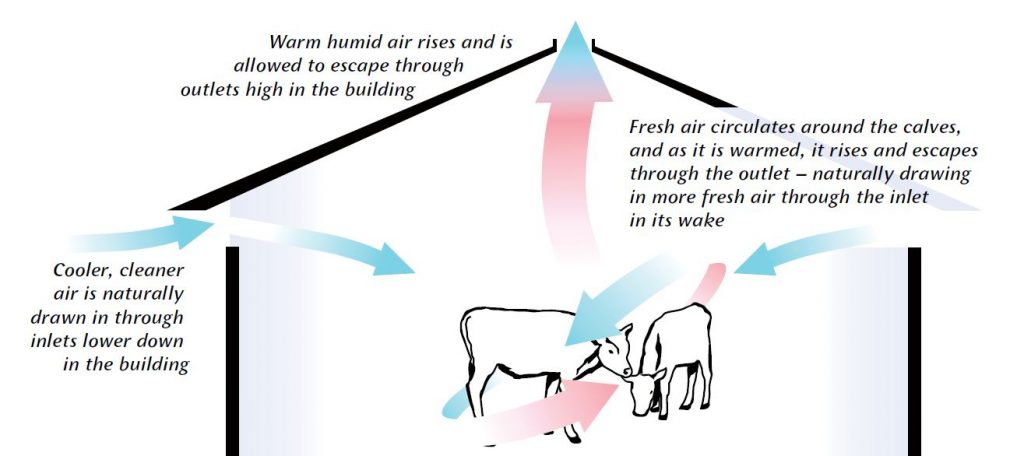
Ventilation Calculations – Inlets and Outlets
The rate of ventilation is influenced by the size of the openings, the roof pitch and the difference between inlets and outlets. As a general rule of thumb, the inlet should be at least twice the size of the outlet. When designing a new building or improving an old one, it is important to calculate the area of outlet required in a roof to allow heat and moisture from the livestock to escape by natural convection. If making improvements to shed ventilation, inlet and outlet areas should be at least brought up to the sizes outlined in the DAFM specification S101. When considering inlet sheeting/boarding it is important to look at the function of each option. In certain situations either due to the layout or situation of a farm building, natural ventilation might be inadequate. In this instance, mechanical ventilation could be considered. You should consult with your agricultural consultant for the best advice on which sheeting/boarding to use which will depend on the prevailing wind direction, type of animal and number of animals to be housed in the shed.
Outlets
- Ensure the outlet area is clean and clear.
- General required outlet sizes can be seen in figure 4. These figures can be modified based on stocking densities and roof pitch.

Inlets
- Inlets should be provided beneath eaves using either a continuous opening, louvered sheeting, plastic mesh, or space boarding.
- The inlet area should be at twice the size of the outlet area to create a natural air flow.
Water Access
Clean water access is a primary requirement of all animal housing and must be available at all times. It is important that the location and height of the trough can accommodate all animals in that shed. Water is frequently spilt around water feeders. Ensure that the area around the feeder is well drained and any spilt water can drain away from the bedding area. Avoid placing feeders in areas where spilt water will pool creating flooded areas of the shed. Aim to give access to 10% of the group to drink at any one time. Animal water intake depends on the age and stage of lactation. See figure 5 for more detail
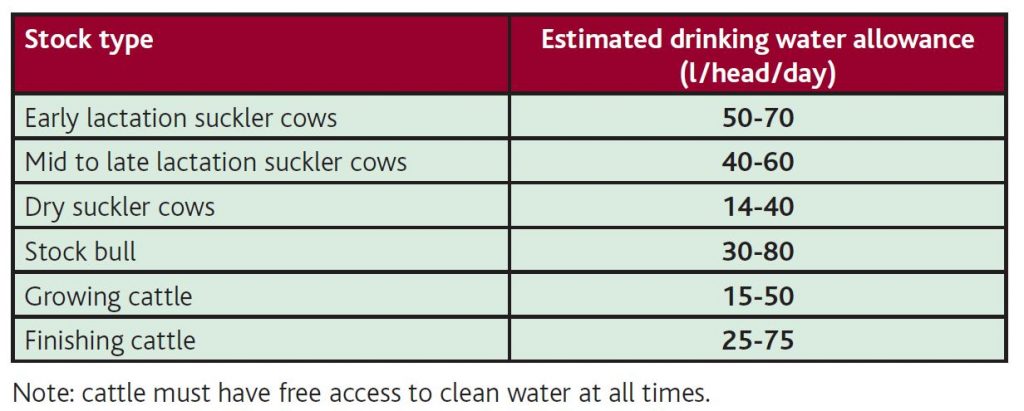
For further information regarding sheds modifications talk to you vet, your agricultural consultant or visit the Teagasc webpage through the link here.
Source:
- Ryan, T. & Lenehan, JJ. 2016 – Winter accommodation for beef animals Teagasc beef manual
- Anon 2013. – Calf house ventilation – The basics MSD Animal Health
TAGS
Sign up to Bovilis® product and event information
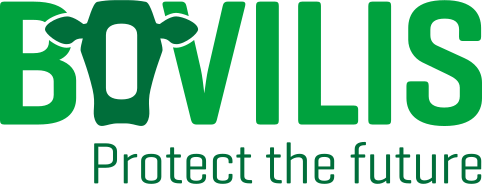
MSD Animal Health
Red Oak North, South County Business Park, Leopardstown,
Dublin 18, Ireland
vet-support.ie@msd.com
PHONE
CATTLE DISEASES
